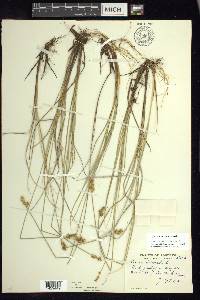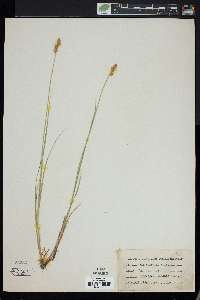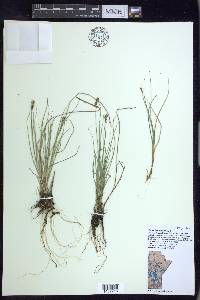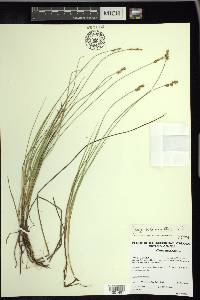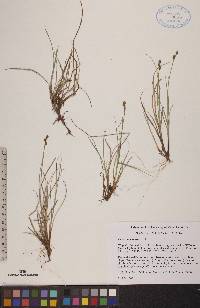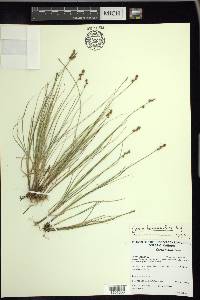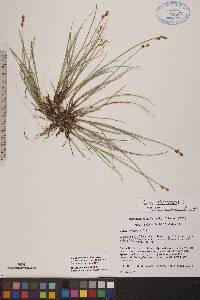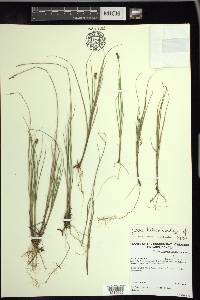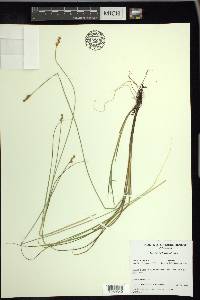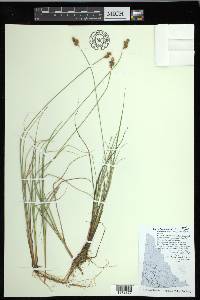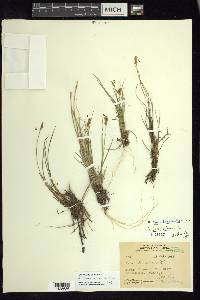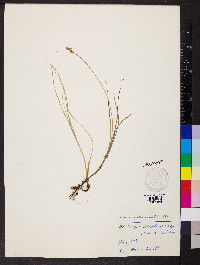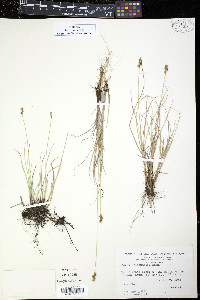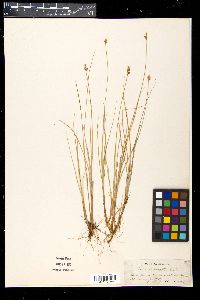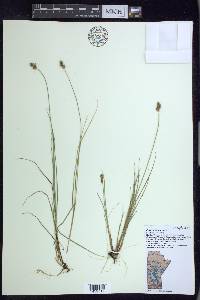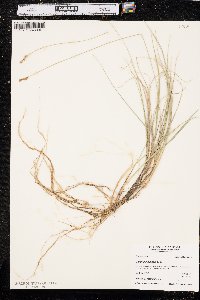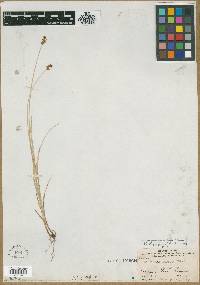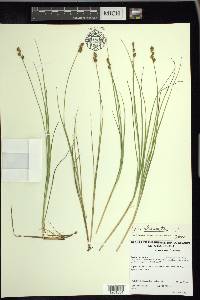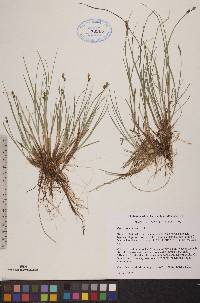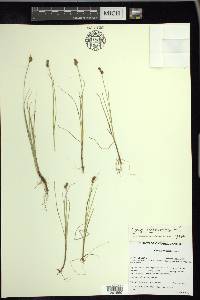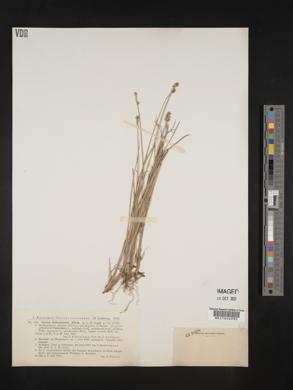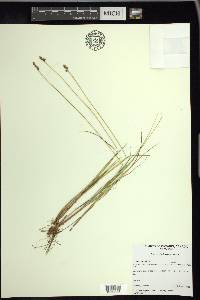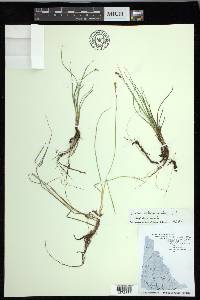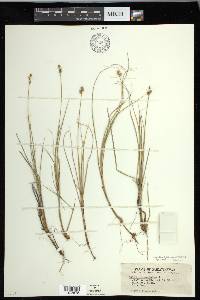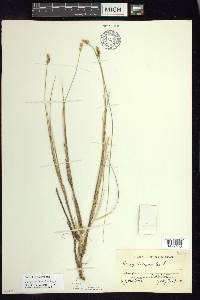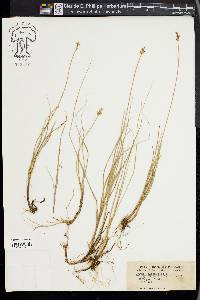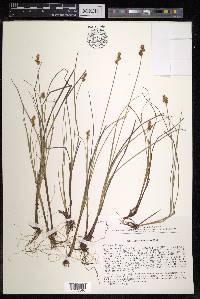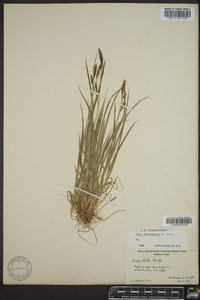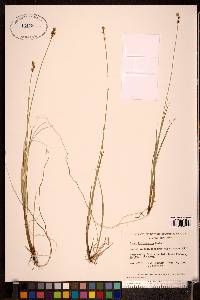Carex heleonastes
|
|
|
|
Family: Cyperaceae
Hudson Bay Sedge
|
Plants loosely cespitose, in small clumps; rhizomes short. Culms erect, slender, 15-35 cm, rough distally. Leaves: sheaths pale brown abaxially, inner band hyaline, often red tinged, concave at summit; ligules wider than long; blades pale green or slightly gray-green, flat or slightly involute, 5-15 cm × 1-2 mm, shorter than culms. Inflorescences 0.8-2 cm × 5-10 mm; proximal bracts scalelike, occasionally bristlelike, shorter than spikes. Spikes 3-4(-6), lateral spikes gynecandrous, closely approximate or proximal spikes slightly separate, individually distinct, containing 5-10 perigynia, ovoid-globose, 4-7 × 5-10 mm; terminal spike not clavate. Pistillate scales red-brown with lighter center and broad white-hyaline margins, oblong-ovate, subequal to perigynia, apex obtuse. Perigynia appressed-ascending, green-white proximally and pale brown distally, often mid brown in mature perigynia, finely several-veined, elliptic-obovate, 2.5-3.5 × 1.2-1.5 mm, widest near middle, subcoriaceous; beak short, entire or with few marginal teeth. Achenes red-brown, broadly obovate, 1.5(-2) × 1-1.2 mm, dull to slightly glossy. 2n = 56. Fruiting Jun-Aug. Mires, damp meadows, lowlands; 0-1500 m; Alta., B.C., Man., Nfld. and Labr., N.W.T., Ont., Que., Sask., Yukon; Alaska, Mich.; Eurasia. The rather doubtful species Carex neurochlaena T. Holm, described from Rink Rapids in Yukon, was re-cognized as C. heleonastes subsp. neurochlaena. It is characterized by slightly smaller perigynia with a short, smooth beak and distinct veins; scales with distinct, in some cases, rather broad hyaline margins; and spikelets brownish. Very little material of C. heleonastes, in the broad sense, is available from northern Yukon and Alaska, and the distinction and distribution between C. heleonastes and C. neurochlaena remains obscure. Most specimens collected from Alaska and identified as C. neurochlaena belong to C. marina.
In small tufts and also with long, slender rhizomes; stems slender but stiff, usually surpassing the lvs, sharply triangular, very rough on the angles above; lvs 4-8 on the lower fourth of the stem, 6-12 cm נ1-2 mm, scabrous distally; spikes 2-4, gynaecandrous, aggregated into a head 1-2 cm נ5-10 mm; scales strongly brown-tinged with pale margins, nearly as long as the perigynia; perigynia 5-10, elliptic-obovate, planoconvex, 2.5-3 mm, abruptly sharp-margined, finely several-nerved on both sides, tapering to a distinct (0.5 mm) beak; achene lenticular, filling the perigynium. Wet open places, especially in calcareous regions; circumboreal, and reported from n. Mich. Gleason, Henry A. & Cronquist, Arthur J. 1991. Manual of vascular plants of northeastern United States and adjacent Canada. lxxv + 910 pp. ©The New York Botanical Garden. All rights reserved. Used by permission. |



